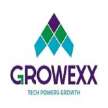
MVP is a term that is widely used in the tech industry, but what does it mean? Is it a Marvelous Product or Powerful Process? In this blog post, we'll attempt to unravel the mystery of MVP and explore its true meaning. We'll discuss what MVP is, why it's important, and how to use it in the tech industry.
Introduction to MVP
When it comes to developing a new product, the introduction phase is crucial. This is where you capture your audience's attention and set the tone for what's to come. But is a marvelous product enough to guarantee success, or is a powerful process equally important? The answer is both. A great product can only take you so far if the process behind it is flawed. On the other hand, a well-executed process can produce a subpar product. That's why it's essential to focus on both aspects equally.
The introduction phase is where you lay the foundation for the rest of the project. It's where you define your goals, identify your target audience, and establish your brand identity. By taking the time to create a solid introduction, you're setting yourself up for success. But it's not just about creating a flashy presentation.
The introduction should also include a clear plan of action, outlining the steps you'll take to bring your product to market. By balancing both the product and the process, you'll create a winning combination that will lead to a successful launch and long-term success.
What is an MVP?
An MVP, or Minimum Viable Product, is a powerful process that can lead to a marvelous product. It is a strategy that involves creating a product with the bare minimum features necessary to satisfy early customers and gather feedback for future development. The goal is to quickly test the product in the market and determine its viability before investing too much time and resources.
This approach allows for flexibility and adaptation based on customer needs and preferences. An MVP is not a half-baked product, but rather a well-thought-out solution that solves a specific problem. It is a way to validate assumptions and test hypotheses, while minimizing risk and maximizing learning. By focusing on the core value proposition, an MVP development company can provide a solid foundation for building a successful product.
So, whether you're a startup or an established company, an MVP can be a game-changer in your product development process. Don't be afraid to start small and iterate often. Remember, an MVP is not the end goal, but rather a means to an end.
Advantages of Using an MVP
Using an MVP (Minimum Viable Product) is a powerful process that can bring numerous advantages to any product development cycle. By focusing on the core features that will solve the main problem of the users, an MVP can help to reduce development costs and time, while also providing valuable feedback from the target audience.
This feedback can help to improve the product and ensure that it meets the needs of the users. Moreover, an MVP development agency can help to identify potential issues early in the development cycle, allowing for adjustments and improvements before the full product launch. This can save time, money, and resources in the long run. Additionally, by launching an MVP, businesses can test the market and assess the demand for their product before investing in a full-scale launch.
This can help to reduce the risk of failure and increase the chances of success. Overall, using an MVP is a marvelous product and a powerful process that can bring numerous benefits to any product development cycle. It is an approach that should be considered by any business looking to develop a successful product.
Disadvantages of Using an MVP
While an MVP can be a powerful process for developing a product, it also has its disadvantages. One of the main drawbacks of using an MVP is that it may not fully satisfy the needs and expectations of customers. Since the MVP is a minimum viable product, it may lack certain features or functionalities that customers may be looking for.
This can result in dissatisfaction and negative reviews, which can harm the reputation of the product and the company. Another disadvantage of using an MVP is that it may not be scalable. While the MVP may work well in the initial stages of product development, it may not be able to handle the demands of a larger customer base. This can lead to technical issues and poor performance, which can again harm the reputation of the product and the company.
Moreover, using an MVP can also be time-consuming and costly. Developing an MVP requires a significant amount of resources, including time, money, and manpower. If the MVP fails to resonate with customers or fails to meet their needs, all the resources invested in its development would be wasted.
In conclusion, while an MVP can be a powerful process for developing a product, it is not without its drawbacks. Companies must carefully weigh the pros and cons of using an MVP and determine whether it is the right approach for their product development goals.
The Role of Process in Developing an MVP
The role of process in developing an MVP is crucial to the success of any product. While it may be tempting to rush through the development process to get your product to market as quickly as possible, taking the time to establish a solid process is essential. A well-defined process ensures that all members of the development team are on the same page, with clear goals and expectations.
It also helps to identify potential roadblocks and challenges early on, allowing for adjustments to be made before they become major issues. Additionally, a solid process ensures that the product is developed with the end-user in mind, resulting in a product that meets their needs and expectations.
By investing time and resources into developing a strong process, companies can create an MVP that not only meets their business goals but also provides value to their customers. In short, the role of process in developing an MVP cannot be overstated, and it is essential for companies to prioritize this aspect of product development if they want to succeed in today's competitive market.
Types of Processes Involved in Development
When it comes to developing a product, there are several types of processes involved that can make or break the success of the final outcome. From ideation to launch, each step plays a crucial role in ensuring that the product meets the needs of the target audience and achieves its intended goals.
The first process is ideation, where the product concept is brainstormed and refined to ensure that it aligns with market demand and solves a real problem. This is followed by prototyping, where the product is designed and tested to ensure that it meets user needs and is functional. Next comes development, where the product is built and refined based on feedback from users and stakeholders.
Finally, the product is launched, and the team monitors its performance to ensure that it meets the desired outcomes. Each of these processes is critical to the success of the product, and any misstep can derail the entire project. Therefore, it's crucial to have a strong team in place that can execute each step with precision and attention to detail.
By following these processes, a team can ensure that their product is not only functional but also meets the needs of their users, resulting in a successful launch and long-term success.
Benefits of Having a Well-Defined Process for Development
Having a well-defined process for development is crucial for achieving success in any project, especially when it comes to creating a minimum viable product (MVP). By having a clear roadmap of the development process, teams can ensure that they are working towards a common goal and that everyone is on the same page.
This can lead to increased efficiency and productivity, as well as better communication and collaboration among team members. In addition, a well-defined development process can also help to minimize errors and reduce the risk of failure.
By having a structured approach to development, teams can identify potential issues early on and take steps to address them before they become bigger problems. This can save time, money, and resources in the long run, and can also help to improve the overall quality of the final product. Another benefit of having a well-defined process for development is that it can help to improve customer satisfaction.
By having a clear understanding of the customer's needs and requirements, teams can create a product that meets their expectations and provides value. This can lead to increased customer loyalty and positive word-of-mouth, which can ultimately help to drive sales and revenue.
In conclusion, having a well-defined process for development is essential for creating a successful MVP. By improving efficiency, reducing risk, and increasing customer satisfaction, a structured approach to development can help to ensure that teams are able to deliver a high-quality product that meets the needs of their customers.
Challenges to Consider When Creating a Process for Development
When creating a process for development, there are several challenges that must be considered. One of the biggest challenges is ensuring that the process is flexible enough to accommodate changes and updates. This is especially important in today's fast-paced business environment, where new technologies and trends are constantly emerging. Another challenge is ensuring that the process is scalable, so that it can accommodate growth and expansion.
This requires careful planning and a focus on creating a process that can be easily adapted to meet changing needs. Additionally, it is important to ensure that the process is well-documented and easily understood by all stakeholders. This can be a challenge, as different stakeholders may have different levels of technical expertise and understanding. Finally, it is important to ensure that the process is supported by the right tools and technologies.
This requires careful consideration of the available options and an understanding of the unique needs and requirements of the development team. Overall, creating a successful process for development requires careful planning, a focus on flexibility and scalability, and a commitment to ongoing improvement and adaptation.
Conclusion
In conclusion, the debate over whether MVP is a marvelous product or a powerful process is not a simple one. Both sides have valid arguments, and it ultimately depends on the specific situation and goals of the project. However, what is clear is that MVP is a crucial tool for any product development process.
It allows for a more efficient use of web developer India, faster feedback loops, and a better understanding of customer needs. By starting with a minimum viable product, companies can avoid investing too much time and money into a product that may not succeed in the market. Instead, they can iterate and improve upon the MVP until it becomes a successful product.
So, whether you see MVP as a product or a process, there is no denying its importance in the world of product development. It is a powerful tool that can lead to success if used correctly. So, embrace the MVP approach and see where it can take your product!






Comments
There are no comments for this story
Be the first to respond and start the conversation.